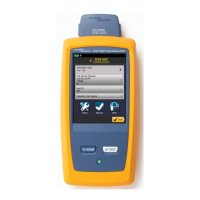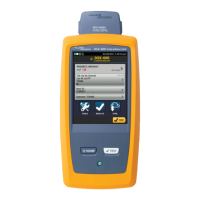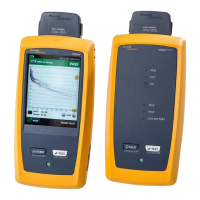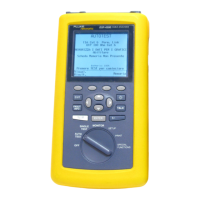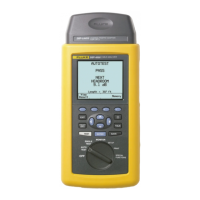DSX-600 CableAnalyzer
Technical Reference Handbook
32
Step 1: See How Much Memory is Available
On the home screen, tap the TOOLS icon, then tap Memory
Status.
The MEMORY STATUS screen shows these values:
The percentage of memory available
The number of test records that are saved
The number of ID sets that have been downloaded to the
tester from LinkWare PC or LinkWare Live.
The memory space taken by other files, such as the databases
for projects and limits.
Step 2: Set Up a Twisted Pair Test
2-1 On the home screen, tap the test setup panel.
2-2 On the CHANGE TEST screen, tap NEW TEST.
2-3 On the TEST SETUP screen, tap each setting to make these
selections:
Cable Type: This is the type of cable you will test. The
CABLE TYPE screen shows the last 10 types of cable that
were selected. Tap the correct cable type.
If you do not see the correct cable type, tap MORE, tap the
name of a cable group, then tap a cable in the group.
NVP: Nominal velocity of propagation, which the tester
uses to calculate length. For this tutorial, use the default
value. The default value is defined by the selected cable
type and is the typical NVP for that cable type.
Shield Test: This setting shows only when you select a
shielded cable type. If you selected a shielded cable type,
select On for this setting.
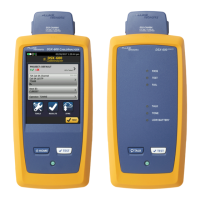
